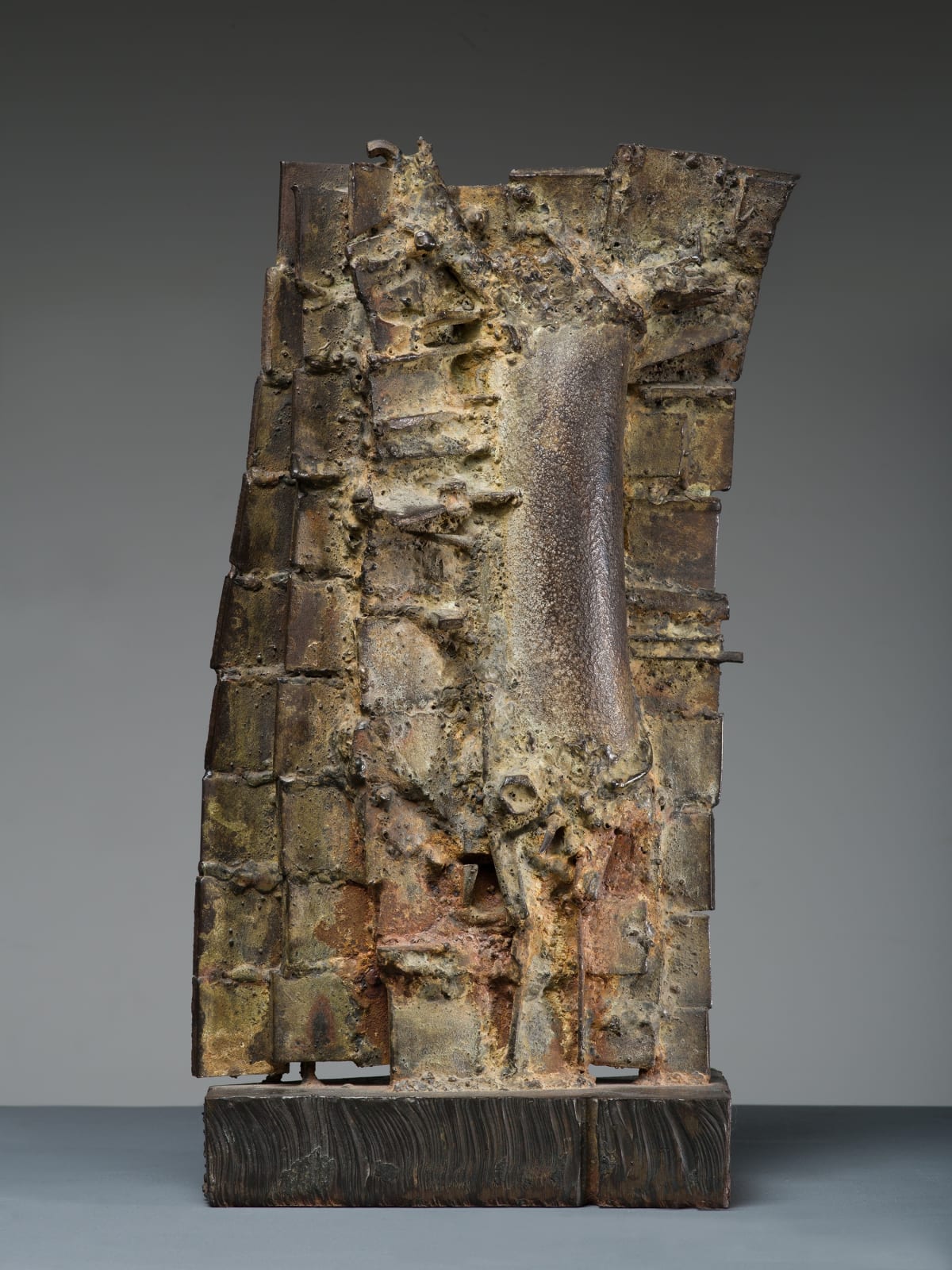-
Artworks
César Baldaccini, dit César French, 1921-1998
Construction (Plaque), 1955Welded iron38.7 x 20 x 10.5 cm (15 1/4 x 7 7/8 x 4 1/8 in.)Signed « Cesar » on the top of the baseFurther images
Provenance
Artist Studio, Paris
Saldenberg, New York
Galerie Claude Bernard, Paris
Galerie Pierre Nahon, Paris
Private Collection, France
Certificate from Denise Durand-Ruel from 9/12/1999, with archive number n°4859
Literature
Denise Durand-Ruel
After working for a year in the Fulmen factories, she married in 1956 with the officer Philippe Durand-Ruel, grandson of the famous impressionist art dealer Paul Durand-Ruel. She follows her husband bases in assignments between Morocco and Algeria while showing a certain independence: "The life of a military woman suited me. I had always said that I would marry a soldier so that he would not be on my back. In 1961, after a failed coup in the last fires of the Algerian war, her husband was incarcerated for three months. The same year, his father-in-law, Pierre Durand-Ruel, dies.
Back in Paris, the young household inherits an important collection of impressionist art. "Only the great-grandfather, Paul Durand-Ruel, had been great. Nobody had bought anything since. At first, we wanted to link the Impressionists and our time by buying modern. But we did not do it because, to buy a Matisse, you had to sell two Impressionists. The legacy was not enough to make up for the delay, "she recalls. The couple then turns towards the current art, ignoring the expensive slice of the pre-war period. The couple, or more precisely Philippe Durand-Ruel and the antique dealer Jean-Marie Rossi, who, after having fully furnished the family apartment in eighteenth century furniture, introduced them to contemporary art. Denyse Durand-Ruel admits at that time an erased position. "I did the opening with them, but my opinion was not important," she says without departing from his good mood.
Around 1963-1964, the couple bought Wols, Caesar, Christo and Arman. Endearing personality, Denyse Durand-Ruel arouses a unanimity which, elsewhere, would appear doubtful, even irritating. In his case, the most sorrowful spirits lower their weapons. "It is the paradoxical proof that one can generate consensual compliments without being bland," says Bertrand Lavier. "She has a hell peach.
As generous as it is available, Denyse Durand-Ruel has taken on a tedious task: the catalogue raisonné. For her, art is not just a diversion. In 1967, after the meeting with François Daulte, who told him about the imbroglios of the fake Renoir, she started working on archiving contemporary artists. She is leading this activity for Jean-Pierre Raynaud, César, Arman and Bertrand Lavier. "I was amazed that she started the catalog with someone young, with a work that was five years old. She is very scrupulous and very honest, says Jean-Pierre Raynaud. Denyse put herself at the disposal of art when she could have had a more frivolous life. Especially since it is an irreversible choice, which takes you on twenty, thirty years. She publishes the first two volumes of Arman (1991 and 1994) and the first volume of César (1994).
Join our mailing list
* denotes required fields
We will process the personal data you have supplied in accordance with our privacy policy (available on request). You can unsubscribe or change your preferences at any time by clicking the link in our emails.









